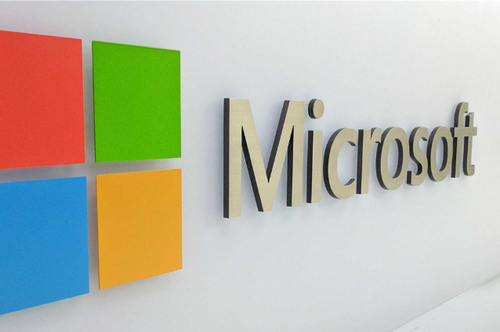In today's digital age, securing your online accounts is paramount. One of the key security features offered by Microsoft is email verification. This process helps ensure that only authorized individuals gain access to your Microsoft account, adding an extra layer of protection. As an expert in this field, I'll guide you through the intricacies of email verification from Microsoft, empowering you to fortify your account's security. By the end of this comprehensive guide, you'll be well-versed in the art of email verification and equipped to safeguard your Microsoft account effectively.
The Significance of Email Verification from Microsoft
Before we dive into the technical aspects, it's crucial to understand why email verification from Microsoft is essential.
1. Enhanced Security
Email verification adds an additional security barrier, making it harder for unauthorized users to access your Microsoft account.
2. Account Recovery
In case you forget your password or face issues accessing your account, email verification serves as a means of account recovery.
3. Protection Against Scams
Email verification helps protect your account from phishing attempts and fraudulent activities, keeping your personal information safe.
How Email Verification Works in Microsoft
Let's explore the process of email verification in Microsoft step by step:
1. Adding a Recovery Email
To initiate the email verification process, you need to associate a recovery email with your Microsoft account. This email will be used for verification purposes and account recovery.
2. Verification Code
When you attempt to log in to your Microsoft account from an unrecognized device or location, Microsoft will send a verification code to your recovery email.
3. Entering the Code
You'll need to check your recovery email for the verification code and enter it when prompted during the login process.
4. Access Granted
Once the correct verification code is entered, you'll gain access to your Microsoft account. If the code is incorrect, access will be denied.
Troubleshooting Email Verification Issues
Sometimes, users encounter issues with email verification. Here are some common problems and their solutions:
1. Not Receiving Verification Emails
If you're not receiving verification emails, check your spam or junk folder. Ensure that the recovery email address is correctly spelled and functioning.
2. Incorrect Verification Code
Double-check that you entered the verification code correctly. These codes are case-sensitive, so accuracy matters.
3. Account Lockouts
In some cases, multiple unsuccessful verification attempts may result in temporary account lockouts. Wait for a while before trying again.
4. Forgot Recovery Email Password
If you forget the password for your recovery email, follow the account recovery process for that email provider.
Advanced Email Verification Tips
To further enhance your email verification prowess, consider these advanced tips:
1. Two-Factor Authentication (2FA)
Enable 2FA for your Microsoft account. This adds an extra layer of security by requiring both a password and a secondary authentication method.
2. Regularly Update Recovery Information
Keep your recovery email address up to date. In case you change your recovery email, ensure you update it in your Microsoft account settings.
3. Beware of Phishing
Be cautious of email or text messages claiming to be from Microsoft. Always verify the sender's authenticity before clicking on any links or providing information.
4. Review Security Settings
Regularly review and update your account's security settings to ensure you're using the latest security features.
Common Questions about Email Verification from Microsoft
As an expert in email verification from Microsoft, I understand the common questions that users may have. Here are answers to those queries:
1. Is Email Verification Mandatory for Microsoft Accounts?
While email verification is highly recommended, it may not be mandatory for all Microsoft accounts. However, it significantly enhances account security.
2. Can I Change My Recovery Email?
Yes, you can change your recovery email in your Microsoft account settings. It's a good practice to keep this information up to date.
3. What If I Don't Have a Recovery Email?
It's strongly advised to have a recovery email. If you don't, consider setting one up to enhance your account's security.
4. How Can I Recover My Account if I Forget My Recovery Email Password?
If you forget your recovery email password, contact the email service provider for account recovery assistance.
5. Is Two-Factor Authentication (2FA) Necessary?
While not mandatory, 2FA is highly recommended for an added layer of security. It's especially beneficial for those concerned about account security.
In conclusion, email verification from Microsoft is a fundamental aspect of account security. By understanding the process, troubleshooting common issues, and implementing advanced security measures, you can ensure that your Microsoft account remains safe from unauthorized access and fraudulent activities. Elevate your online security game with email verification from Microsoft, and enjoy peace of mind in the digital world.



